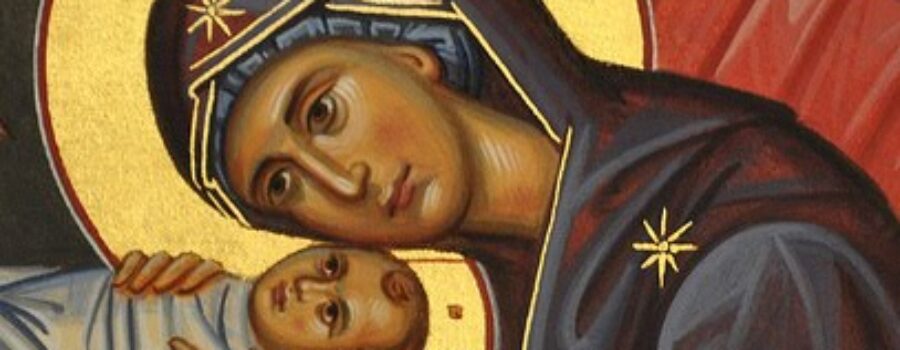Thomas Hopko spoke of an 88-day “winter festal season of the revelation of God in human flesh.” As an Orthodox Christian, he was speaking of the Eastern practice of observing a 40-day fast before Christmas, followed by the Feast of the Nativity, Theophany on day 52, the Presentation of Christ in the Temple on day 80 (40 days after Christmas, as Luke indicates), and the Leave-taking of Presentation on February 9 [February 22 Old Style].
I’d never thought of this before as an 88-day period, but it makes sense. The first portion of the fast includes commemorations of many Old Testament prophets and signs of the coming Messiah—Jonah, the Three Young Men in the Fiery Furnace, the little town of Bethlehem Ephrathah, and so on.
“God in human flesh?” Salvation is physical—for the whole man—and is effected by the Incarnate Son, resulting in the resurrection of our bodies from the dead. Lent, Pascha, the Easter Season, and Pentecost deal with the acts of Christ in the finale of his earthly ministry in the flesh, including the Ascension of His flesh into heaven, by which we are raised into heaven with Him.
But the stage for all this is set in the eighty-eight days of prophecy and expectation, in remembering the generations from Adam to Jesus, culminating in Jesus’ Birth, then His bodily descent into the Jordan under the hand of the last Prophet of the Old Covenant, who pronounces Jesus “the Lamb of God who takes away the sin of the world.”
In a season that begins in growing darkness, after forty days, the Light enters Bethlehem and His star shines in the East, as the Magi affirm. As light slowly returns, the Son of God returns to the waters of a new creation, while the Spirit descends and the Father declares His Son.
Matthew alone speaks of Jesus’ entry onto the stage of public ministry (immediately after His baptism and the forty-day temptation) as the entry of light: “the people dwelling in darkness have seen a great light, and for those dwelling in the region and shadow of death, on them a light has dawned” (Mt. 4:16), citing the prophet Isaiah. Light versus death. Light is referenced again [on February 15 O.S.], by Simeon, who calls the Babe presented in the temple “a light for revelation to the gentiles.” Apocalypse is an unveiling, and Simeon declares, “Mine eyes have seen thy salvation.” All this relates to a child, born necessarily of human flesh by the Spirit of God.
The Incarnation is the opening act—or in another sense, it sets the stage, the lights go up, the curtains open at the Baptism, and the full drama that begins in Lent and runs through Pentecost is part two. For now, we look forward to the Presentation, the Nativity season’s bookend, when the forty-day-old Infant is presented and the voice of prophecy continues to bear witness to the Light…. The Light cannot be held back and always returns. Be ready for it. It’s coming. For “all flesh shall see the salvation of God.”
—James Kushiner,
Touchstone Editor, Fellowship of St. James


